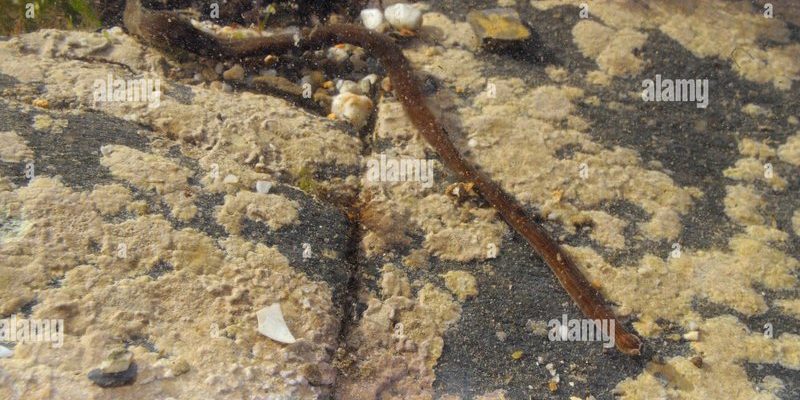
Bootlace worms aren’t your average critters. They can grow up to 30 meters long and are often found in marine environments. When we restore their habitats, we’re not just helping them survive; we’re also supporting the larger ecosystem. Let’s dive into what habitat restoration is, why it matters for bootlace worms, and the broader implications for our planet.
What is Habitat Restoration?
Habitat restoration is the process of returning a natural environment to its original state. This might involve reviving wetlands, cleaning up polluted areas, or removing invasive species that threaten local wildlife. Think of it like fixing a puzzle. If pieces are missing or in the wrong spots, the picture just doesn’t come together. Restoring habitats means putting those pieces back in place.
In many cases, habitat restoration can also improve the local water quality and stabilize the soil. It’s a win-win situation—healthy environments support healthy wildlife. If habitats are neglected or destroyed, species like the bootlace worm can struggle to survive. Understanding habitat restoration is crucial for anyone interested in our planet’s health.
The Role of Bootlace Worms in Ecosystems
You might be wondering why these long, slithery worms matter so much. Bootlace worms are fascinating creatures that play a key role in their ecosystems. They primarily inhabit muddy seafloors and act as natural recyclers, breaking down organic matter and returning nutrients to the environment. This process is vital for maintaining a balanced marine ecosystem.
Their presence indicates healthy ecosystems. If bootlace worms are thriving, it’s usually a sign that the environment is doing well. Think of them as a barometer for marine health. So when we consider habitat restoration efforts, we’re not just focusing on the worms; we’re also thinking about the entire ecosystem that supports them.
How Habitat Restoration Affects Bootlace Worms
Habitat restoration can have profound impacts on bootlace worms. First, restoring their habitats can lead to improved water quality. Many restoration projects focus on cleaning up pollution and reducing sedimentation, which can smother these worms and their food sources. Better water quality means healthier bootlace worms.
Additionally, restoration projects often aim to revive ecosystems that are rich in biodiversity. More biodiversity translates into abundant food sources for worm species. When habitats are restored, these worms can flourish, leading to healthier marine environments overall. It’s like ensuring a buffet is filled with delicious options—everyone benefits!
Successful Examples of Habitat Restoration
There are numerous success stories in habitat restoration that benefit bootlace worms and their ecosystems. One such example is the restoration of tidal wetlands in various coastal areas. These projects involve planting native vegetation, which helps stabilize the soil and improve water quality. As a result, we see boosts in bootlace worm populations and overall marine health.
Another excellent case is in the restoration of urban rivers and streams. Cities around the world have taken steps to clean up their waterways by removing trash, planting native species, and creating buffer zones. These efforts have led to cleaner waters where bootlace worms can thrive. It’s a beautiful example of how urban areas can reclaim their natural beauty while supporting local wildlife.
Challenges in Habitat Restoration
While habitat restoration has numerous benefits, it’s not without its challenges. One major issue is funding. Many restoration projects need significant financial resources, which can be hard to come by. Moreover, finding the right balance in a restoration project is crucial. Overdoing or mismanaging restoration can lead to unintended consequences, like the introduction of new invasive species.
Additionally, habitat restoration relies heavily on community involvement. Without local support, many initiatives struggle to succeed. Engaging communities requires education about the importance of these projects and their impact on local wildlife, including bootlace worms. If people understand the value of a healthy ecosystem, they’re more likely to pitch in.
The Future of Habitat Restoration and Bootlace Worms
Looking ahead, the future of habitat restoration is promising. With increasing awareness of environmental issues, more communities are rallying to restore their local ecosystems. This awareness is critical not only for the survival of bootlace worms but for countless other species and the health of our planet.
Innovation plays a significant role in these efforts as well. New techniques and technologies are continuously evolving to aid in restoration projects. For instance, scientists are developing ways to use drones for reforestation or deploying biodegradable materials to help stabilize coastlines. These advancements mean that restoration can become more efficient and effective, ultimately benefiting more species.
Concluding Thoughts: Why It Matters
Habitat restoration is crucial for the survival of many species, including the remarkable bootlace worm. By taking steps to restore environments, we’re not just helping individual species; we’re also enhancing the overall health of our ecosystems. It’s about the interconnectedness of all life on Earth.
Every action counts. Whether you’re volunteering for a local cleanup, educating others about the significance of these efforts, or simply appreciating your natural surroundings, you’re making a difference. Remember, when we restore habitats, we’re not just saving worms; we’re ensuring that our planet remains vibrant and alive for generations to come.

